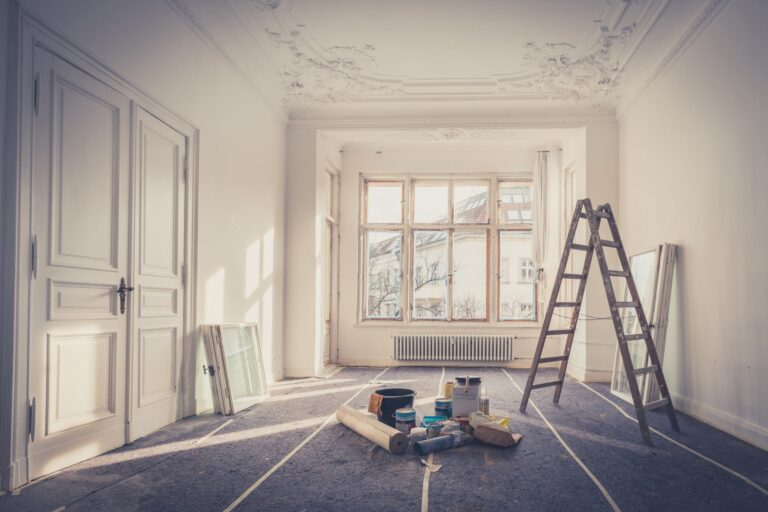It’s been more than four years since the Grenfell Tower disaster. A lot has changed in the construction industry since then, especially when it comes to new-build high rises, and the Building Safety Bill puts creating high-quality and safe homes at the forefront.
On 5 July, the government introduced the Building Safety Bill in the House of Commons. It’s bringing forward the biggest changes to building safety regulation in a generation. The safety measures include steps to ensure that property developers fully address the concerns highlighted in the Hackitt Report.
Housing Secretary Robert Jenrick says: “The new building safety regime will be a proportionate one, ensuring those buildings requiring remediation are brought to an acceptable standard of safety swiftly, and reassuring the vast majority of residents and leaseholders in those buildings that their homes are safe.”
A new Building Safety Regulator
A Building Safety Regulator will oversee a new safety regime for high-rise residential homes. The regulator will hold those who break the rules and are not properly managing building safety risk accountable. A ‘golden thread’ system of information will be created, stored and updated throughout a building’s development.
Mark Hayward, chief policy adviser at Propertymark, states: “The introduction of a Building Safety Regulator is a welcome policy from this legislation and will be essential in holding house builders and developers to account.
“We hope that today’s announcements will drive the change needed across the industry to enable the construction of high-quality and safe homes.”
What’s in the Building Safety Bill?
The Building Safety Bill will clearly identify people responsible for safety during the design, build and occupation of developments. Residents will have more routes to raise safety concerns. Additionally, mechanisms will ensure their concerns are heard and taken seriously.
Additionally, rights will be extended to compensation for substandard workmanship and unacceptable defects to improve quality control. The bill also looks to drive changes needed across the industry. This will enable the design and construction of high-quality and safe homes in the coming years.
Through the Building Safety Bill, residents in high-rise developments will also have more say in the management of their building. Property developers must join and remain members of the New Homes Ombudsman and provide redress to homebuyers. This includes through the awarding of compensation.
In addition, the amount of time residents can seek compensation for substandard construction will increase to 15 years. These changes will also apply retrospectively. For example, residents of a building completed in 2010 would be able to bring proceedings against a developer until 2025.
Buying property in a new-build high rise
Since the Grenfell disaster, the majority of housebuilders and developers have become substantially more stringent with the building materials used for new-builds. Keeping residents safe has never been more in the limelight. And many builders are taking extra steps to ensure their buildings meet the highest regulatory standards.
All new high rise homes are banned from using combustible materials. Most developers are ensuring their projects are fire-safe, regardless of a building’s height. Therefore, if the development is being built by a reputable housebuilder, property buyers should not be put off investing in a new-build high rise.
Developers should be taking extra steps to ensure that all of their properties are fully mortgageable and safe for residents. And as with any property purchase, appoint trusted conveyancers and solicitors who should highlight any potential issues.
Dame Judith Hackitt, chair of the Independent Review of Building Regulations and Fire Safety, comments: “I am delighted that we have reached this important milestone for the Building Safety Bill. It is vital that we focus on getting the system right for the future and set new standards for building safety.
“Residents and other stakeholders need to have their confidence in high rise buildings restored and those who undertake such projects must be held to account for delivering safe buildings.”
What’s next?
The first reading of the Building Safety Bill in the House of Commons has completed. The second reading is set for Wednesday 21 July. The bill will need to go to the committee stage, report stage and third reading. And then it would proceed to the House of Lords.
Mark Hayward says: “Today’s Bill is a significant step in ensuring that everyone feels safe in their own homes. Following the disaster of the 2017 Grenfell fire, it is essential that government continues to take action following the Fire Safety Act which received Royal Assent in April and stamps out lax building standards.”
At BuyAssociation, we specialise in off-plan new-build investments. We only work with experienced, reputable developers who maintain the highest building and safety standards. To find out more, speak to one of our team members, and sign up to stay up to date with our latest property investment opportunities.










